

History of Gwalior Madhya Pradesh dates back to the ancient times. According to some modern research, implements of Paleolithic age has been found in this region of the country. Many cave paintings have also been discovered in this area. Some pottary of the iron age has also been found in Gwalior. indian holiday provides online information on the History of Gwalior Madhya Pradesh.
In the ancient text of Mahabharata a reference has been made about a place called Gopalkaksh. It has been described as the victory place of Bhima. According to some historians Gopalkaksh is Gopadri or Gopagiri, the old name of Gwalior. In the late period of 2nd century this city came under the influence of the Nagvans Clan. Bimnag, one of the important rulers of this dynasty shifted the capital from Vidisha to Padmavati(modern Pawaya). Pawaya is situated at a distance of 68 km from Gwalior. An important fort and the Dhoomeshwar Mahadeo Temple are areas of interest in Pawaya.
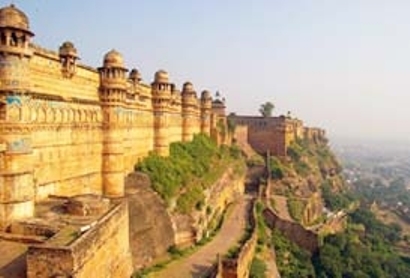
Opening Hours 8:00 AM - 6:00 PM (All Day)
An architectural marvel of the 8th century, the Gwalior Fort is perched on a hilltop, near the Gwalior city of Madhya Pradesh. Being adhered to the conquests of various dynasties and rulers, the design of this majestic hill top had been subjected to various changes. The defensive structure of the fort comprises two main Palaces, temples and water tanks. Amongst it, the most acknowledged is the Teli-Ka-Mandir and Man Singh Palace. The former one was built in the Dravidian style shrine and its generously sculpted exteriors are highly appreciated. Quite a watch are the two pillared Saas-Bahu temples in the fort complex as well..
Then there is the Man Singh Palace, built by the king Man Singh in the 15th century. The reputed Palace has an amazing design. With blue ceramic tiles at the front façade and an impressive structure the Man Singh Palace reflects the true colors of Tomar dynasty. To compliment the Man Singh Palace, the Gwalior Fort complex also houses the Gujari Mahal. This was built by Raja Man Singh for his beloved queen Mrignayani. Other notable structures in the majestic Gwalior Fortress are the Karan Palace, the Jahangir Mahal and Shahjahan Mahal.
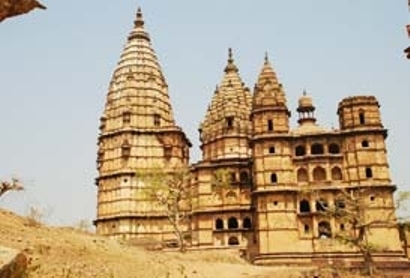
Chatarbhuj Mandir, Gwalior is one of the important destinations in the picturesque city of Gwalior in Madhya Pradesh. Rajput clans like Kachwahs and the Tomars have dominated the city of Gwalior since the 8th century. Maharaja Suraj Sen of the Kachwaha dynasty built the City of Gwalior out of gratitude to the hermit-saint Gwalipa because the saint cured him from a deadly disease. The Gwalior Fort - one of the prime destinations in this part of the country has some of the best temples, palaces and bathing sites. It is near to the Chatrabhuj Temple. Chatarbhuj Mandir in Gwalior in India is one of the fascinating places for the tourists. he Chatrabhuj Mandir, lies to the left of the Ram Raja Temple and is one of the supreme works of art. There are narrow, steep and dark winding stairs that go straight to the roof..
History: Chatarbhuj Mandir, Madhya Pradesh was built in AD 876 and is a Vishnu shrine. It is also called the temple of the four armed. Another belief goes that the temple was built to enshrine Lord Rama. Later on it was found out that the idol cannot be moved into the palace and from then on the temple came to be revered.
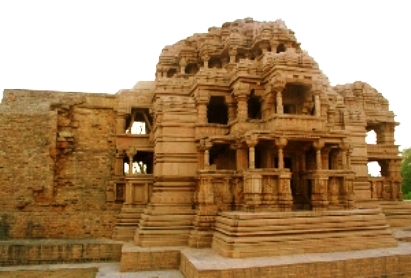
Sas Bahu temple in Gwalior is famous temple, is dedicated to Lord Vishnu by the King Mahipala. Lord Vishnu is also known as Sahastrabahu, the one with many hands. But gradually the name changed into Sas Bahu Temple, perhaps by mispronunciation, or misinterpretation.
Lord Vishnu is supposed to be the preserver of this Universe. He keeps vigilance over this earth and if there is any disobedience among men, he punishes them. But he is also considered to be the most kind hearted among the Hindu Gods, who come to help his followers under any circumstances.
King Mahipala wished for the success of his Kingdom and the overall prosperity. This being ranted by The Lord, a temple was constructed to commemorate Lord Vishnu. So, the name Sahastrabahu was given to this temple which later in course of time changed into Sas Bahu Temple. The construction of this temple was completed in the year 1092 AD by the king Mahipala.
At the Gate of the Sas Bahu Temple in Gwalior there is a caption in Sanskrit. The doorway gives the view of the Indian Trinity, Lord Brahma, the creator, Lord Vishnu the Preserver and Lord Shiva or the Destroyer..
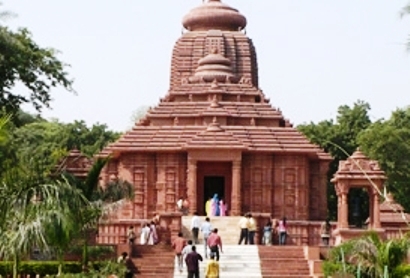
Surya Mandir, Gwalior is one of the important destinations in the historical city of Gwalior.Well revered among the Holy Places in Gwalior, Surya Mandir in Gwalior in India is thronged by numerous pilgrims and regular tourists every year. Indian holiday offers online travel guide on Surya Mandir, Gwalior. Having some of the best tourist spots like the Gwalior Fort, Man Mandir Palace, Sas Bahu Ka Mandir and Teli Ka Mandir, the city has a charm of its own..
The Surya Mandir, Gwalior or the Sun Temple was constructed in 1988 by G.D Birla, the famous industrialist of India. It is influenced by the famous Sun Temple at Konark in Orissa. The city of Gwalior dates back to the 8th century and has been witness to some of the greatest Rajput clans like the Prathiharas, the Kachwahs and the Tomars. Stories go around that Maharaja Suraj Sen of the Kachwaha dynesty was down with a deadly disease and was cured by the hermit-saint Gwalipa. It was out of gratitude to him that Suraj Sen built the City of Gwalior..
The Surya Mandir, Madhya Pradesh is one of the new entrants into the list of the places of interest in Gwalior. The temple is one of the architectural wonders and has a beautiful sculpture of Lord Surya in the temple premises.Surya Temple, Gwalior has captivating exteriors which has been built of red sand stone.The temple interior has white marble and this adds to the exotic beauty of this marvelous creation..
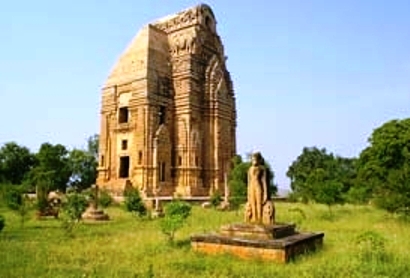
Gwalior is one of the important destinations of the country and is replete with beautiful places. Teli Ka Mandir, Gwalior is one of the favored destinations in the city of Gwalior. It is the tallest and the most impressive temple in the Gwalior Fort. It is an amalgamation of northern and southern architectural styles. Situated in the city of Gwalior, Teli Ka Mandir, Gwalior has a special position in the tourism map of the country..
Gwalior city houses an illustrious fort called the 'pearl in the necklace of the castles of Hind', within the precincts of which the Teli Ka Mandir, Gwalior is situated. The place was an ancient seat of Jain worship and has one of the best fortresses of the Hindu period. The region was earlier known as Gopasetra from where Gwalior came into being..
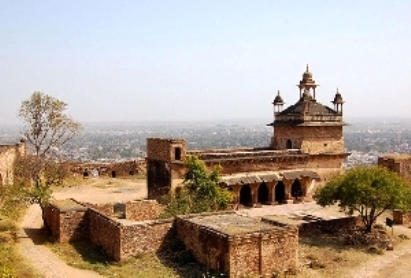
Gwalior, one of the historically important destinations of the country has beautiful monuments and Gujari Mahal, Gwalior is one of them. It is situated within the Gwalior fort. The fort is situated on a sand stone precipiece which is 2.8 km in length, 200-850 km in width and 91 m above the plains. The Gwalior fort encloses six Mahals, numerous water tanks and three temples. The fort has been witness to many ups and downs and has changed hands from one ruler to another. Initially ruled by the Tomars it passed to the Mughals, then the Marathas, the British and at last the Scindhis. There are two main entrances to the fort, one from the North East and other from the South West. .
Known as one of the finest monuments and museums in Gwalior, Gujari Mahal Gwalior is an obvious choice with the tourists..
Gujari Mahal, Gwalior was constructed by Raja Mansingh for his favourite queen, Mrignayani in the 15th century. It has witnessed rough weather and has gone through the test of time. The story goes that after the king succeeded in wining over Mrignayani she demanded a separate palace for her with constant water supply from river Ria and hence, Gujari Mahal in Gwalior in India came up..
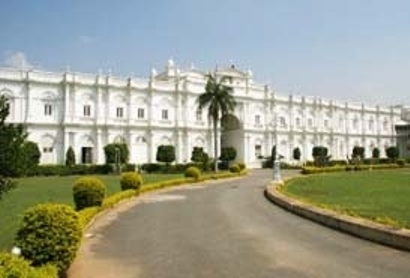
Opening Hours 10:00 AM - 5:30 PM Thu-Tue Entrance Fee 450 Foreigners 70 Indians Camera Fee INR 70 / 120 video
One of the most popular tourist attractions of Gwalior, Jai Vilas Palace Museum was erected way back in the year 1874 by Maharaja Jayaji Rao Scindia and its cost amounted to INR 1 crore. Originally built as a palace, it has now been turned into a museum. Designed by Sir Michael Filose, a popular architect of those times, the structure is an example of splendid European architecture clubbed with the first floor being Tuscan, the second being Italian-Doric in style and the third Corinthian in architectural style. Spread in an area of 12, 40, 771 square feet, the palace has a huge Durbar Hall, beautifully furnished with superb chandeliers, gilt and gold furnishings and a huge carpet. The chandeliers and the gold leaves in the hall are the world's heaviest. There is a huge dining table with a silver train is a highlight. This mini train is a table trolley which rotates itself on the table in front of diners so that they can pick up food. .
The collection at Jai Vilas Palace Museum includes of largest pair of chandeliers in the world, silver carriage, oil painting by Raja Ravi Verma, Malabar furniture, Malabar furniture, crystal furniture, palki (Palanquin), pooja ghar, Jacobean furniture, Napolean table, miniature paintings, lithograph, royal old photograph, silver train, Chinese pot, clothes and footwear of the royalty, Jain sculpture, Lord Vishnu bronze statue, Balgopal bronze statue, weapons and more. .
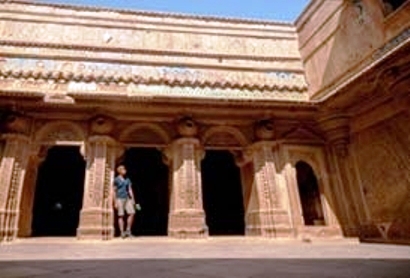
Opening Hours 10:00 AM - 5:30 PM Thu-Tue Entrance Fee 450 Foreigners 70 Indians Camera Fee INR 70 / 120 video
Gwalior , one of the important historical destinations of the country has excuisite palaces and Man Singh Palace, Gwalior is one of them to really watch out for. It is housed within the Gwalior fort . The fort spreads out over an area of 3kms.The Gwalior fort encloses six palaces,numerous water tanks and three temples.The Fort has been witness to many ups and downs and has gone from one ruler to another. Initially ruled by the Tomars it passed to the Mughals, then the Marathas, the British and at last the Scindhias. .
The palace was commissioned by Tomar ruler, Raja Man Singh between 1486 and 1516 and finds itself inside the complex of Gwalior Fort. A splendid Hindu architecture, the palace has 2 open courtyards bordered by apartments on two floors. This four-storeyd palace has large rooms, wherein some were venues for musical concerts, the others were for the royal ladies to sit and enjoy the music. The blue paintings on the walls with touch of green and gold look striking. The palace also has Jauhar Kund, a place where the wives of the ruler of Gwalior self-immersed themselves in fire when the ruler died in the year 1232. There are 2 underground or basement floors with circular cells. They were used as prisons. This was the prison where the Mughal emperor Aurangzeb jailed Murad, his brother and had murdered him. .